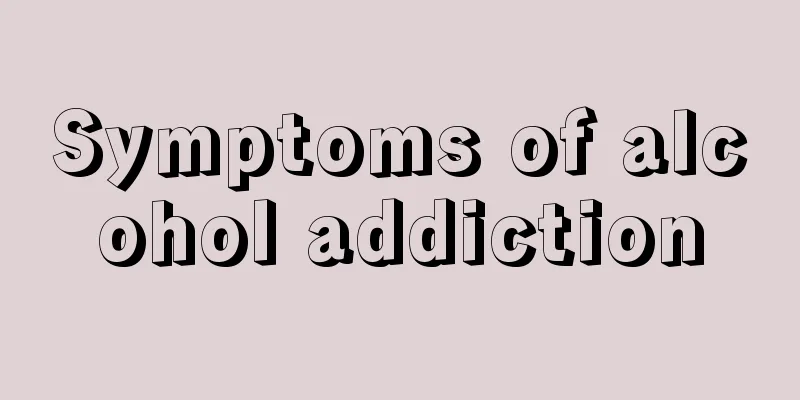Are there any side effects of anesthesia for tooth extraction?

|
Tooth extraction, that sounds like a scary word. But we can't avoid having to extract teeth in life. For example, if your teeth are badly decayed and you need to wear dentures, you need to have your teeth extracted. Or maybe you have impacted teeth, commonly known as wisdom teeth, which you have no choice but to remove. But this kind of minor surgery does not require general anesthesia, so we need local anesthesia. In this way, the patient can retain consciousness and its other body functions will be less affected, allowing the patient to better cooperate with the doctor and complete the operation smoothly. When children go to the dental clinic to treat tooth decay, the dentist will usually anesthetize the tooth first, then use a dental drill and a dental handpiece to remove the decayed part, and then fill it. Many parents often ask doctors, "Are you going to pull my child's tooth? Otherwise, why do you need anesthesia?" Let your teeth “sleep” When treating young patients' teeth, pediatric dentists usually do not say directly to the children: "I'm going to give you an injection and give you anesthesia." This is because injections are something that everyone is afraid of, and saying it directly will scare the children, making many children more afraid of seeing the teeth, and increasing the difficulty for dentists to treat children. Therefore, when seeing a child in the dentistry, if the dentist wants to give the child local anesthesia, he or she will usually "subtly" say: "Let the teeth sleep." Because "sleeping" means no feeling, and it will not cause any suggestive associations of pain, children can generally accept this statement. According to a survey, fear of pain is the biggest reason why people hesitate to see a dentist. Many people have some dental diseases in their mouths, but they dare not seek medical treatment because they are "afraid of pain." Even if adults are afraid of pain, their reason will still overcome many psychological barriers. If treatment is really necessary, they will still muster up the courage to face the challenge of "pain" and seek medical treatment. However, children are afraid of pain, which often leads to extremely resistant, rejecting, and uncooperative attitudes and behaviors when they go to the dentist for treatment. At this time, if the parents do not treat the children because their children are afraid of seeing a dentist, then it is very likely that the teeth will be allowed to decay further, and eventually the children will suffer from tooth decay, facial swelling, and persistent fever, and it will be too late to regret it. In fact, with the modernization of dentistry today, many treatments are no longer extremely painful. Due to the increase in the types of anesthetics and the advancement of technology, even "painless dental treatment" can be achieved. Local anesthesia, no damage to the brain Many steps in dental treatment may cause pain or discomfort. Therefore, dentists will administer local anesthesia before these treatments - anesthesia is used to numb the teeth and surrounding tissues. Take tooth filling as an example. Because the dental drill will cause pain when grinding the teeth, anesthetics will be used to numb the teeth before filling, while the patient himself will be conscious. Some parents worry that anesthesia will damage the brain nerves. In fact, anesthesia is only local. With appropriate dosage and operation, it will not affect other parts of the body. Criteria for determining whether to administer anesthesia Do I need to take anesthesia when I have my teeth checked? Not necessarily, it depends on what treatment is being given. Generally speaking, filling a tooth requires anesthesia because drilling a tooth can cause pain. If the cavity is very deep, the child will cry or twist when in pain, making it more difficult for the dentist to handle the filling, or the filling will not be done properly, affecting the treatment effect. Or if the tooth decay has penetrated deep into the pulp, "nerve treatment" is necessary; or the tooth may need to be extracted, etc. For any treatment that causes discomfort or pain, it is necessary to use anesthetics. In other words, when children go to the dentist, except for regular dental examinations, fluoride application, X-rays, and orthodontics, which do not require anesthesia, tooth extraction, nerve treatment, and fillings all require anesthesia. Given everyone's fear and aversion to injections, when parents take their children to see the dentist, they can first instill in their children the positive meaning of dental care. Never describe in graphic detail how the dentist will extract your child's teeth, and don't threaten your child with injections. For example, when children are disobedient, parents often say, "If you don't behave, I'll ask the dentist to give you an injection or extract your teeth." This will of course affect the child's attitude and reaction to dental care in the future. |
<<: What are the functions of bread improvers?
>>: What is the process of tooth extraction?
Recommend
The cause of alopecia areata may be related to these
Alopecia areata is common among men, also commonl...
Does nipple discharge mean breast cancer? It could be another disease
Nipple discharge is one of the common symptoms of...
Recurrence rate of clear cell renal cell carcinoma
Cancer damage causes the gradual failure of peopl...
How to treat finger joint fractures
In life, we often need to use our fingers to hand...
What are the treatments for heart failure
The treatment of heart failure is very important ...
The top ten heating tools in winter, the last one is lit
It is said that every winter in Huai'an is al...
What causes liver cancer?
If the diagnosis is early, it is recommended to p...
What are the dangers of scrotitis?
Scrotitis is not unfamiliar to male friends, beca...
Actively carry out rehabilitation nursing for nasopharyngeal carcinoma chemotherapy
The development of modern medicine has made chemo...
Symptoms of carambola allergy
Allergies are a common phenomenon. Many people ma...
Foods that are good for hair
Although women like to dye their hair in various ...
Will wine go bad
As trade becomes more and more frequent, many goo...
Will nasopharyngeal cancer cause numbness in the left hand?
Will nasopharyngeal cancer cause numbness in the ...
What to do when you are nervous and anxious
Many people must have experienced tension and anx...
Which stage does stomach cancer metastasis belong to?
The spread of gastric cancer is also called metas...









